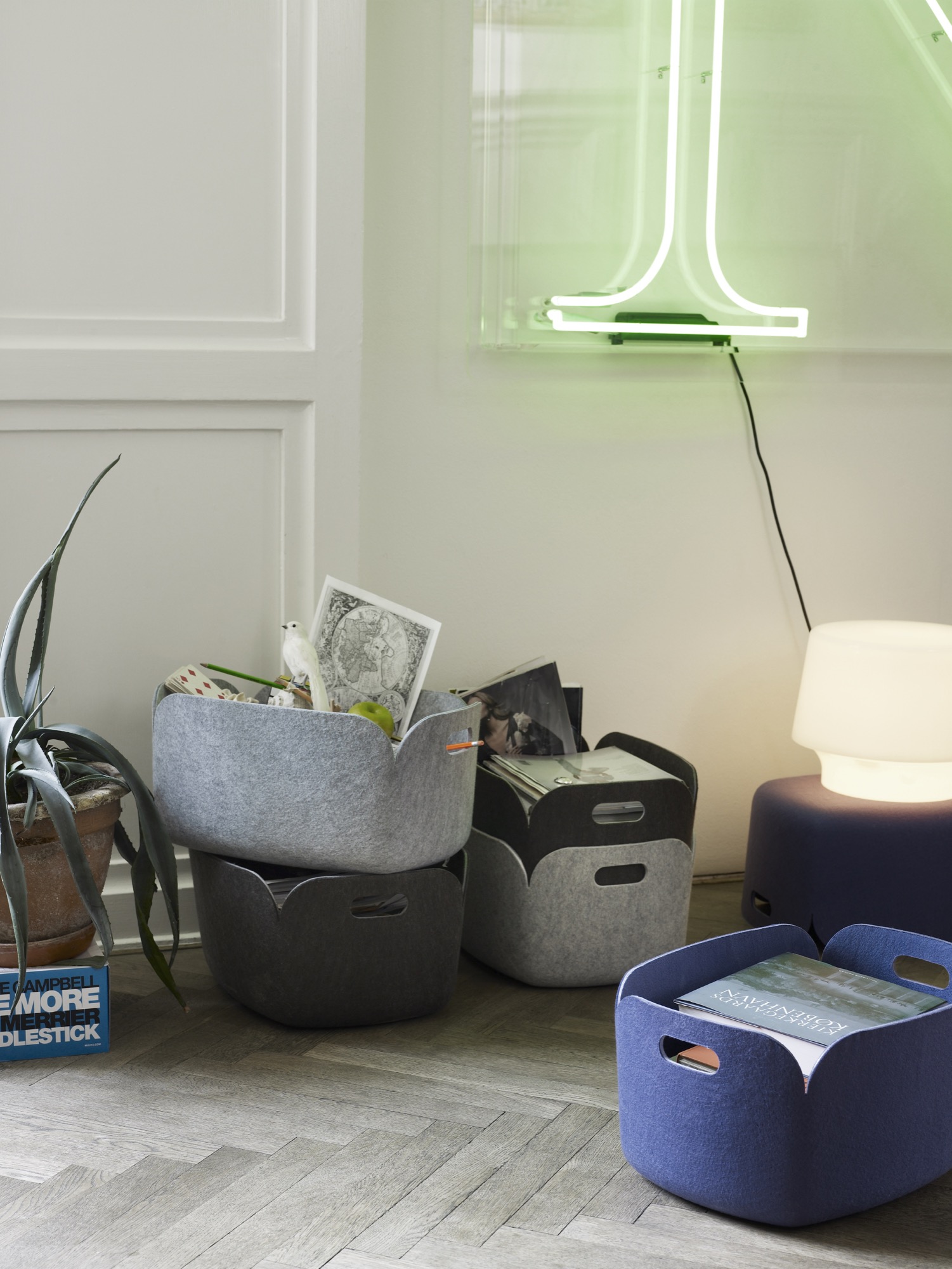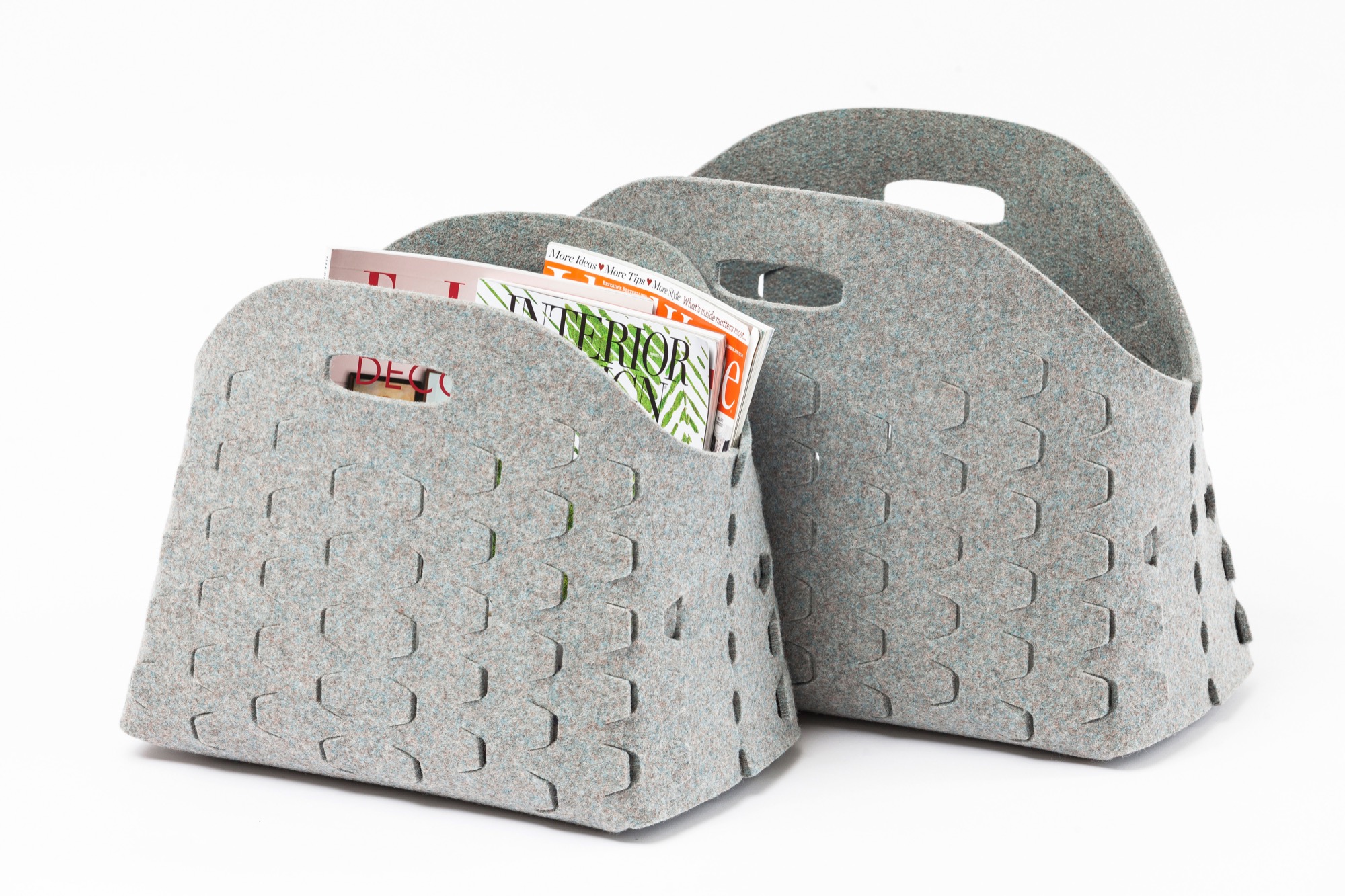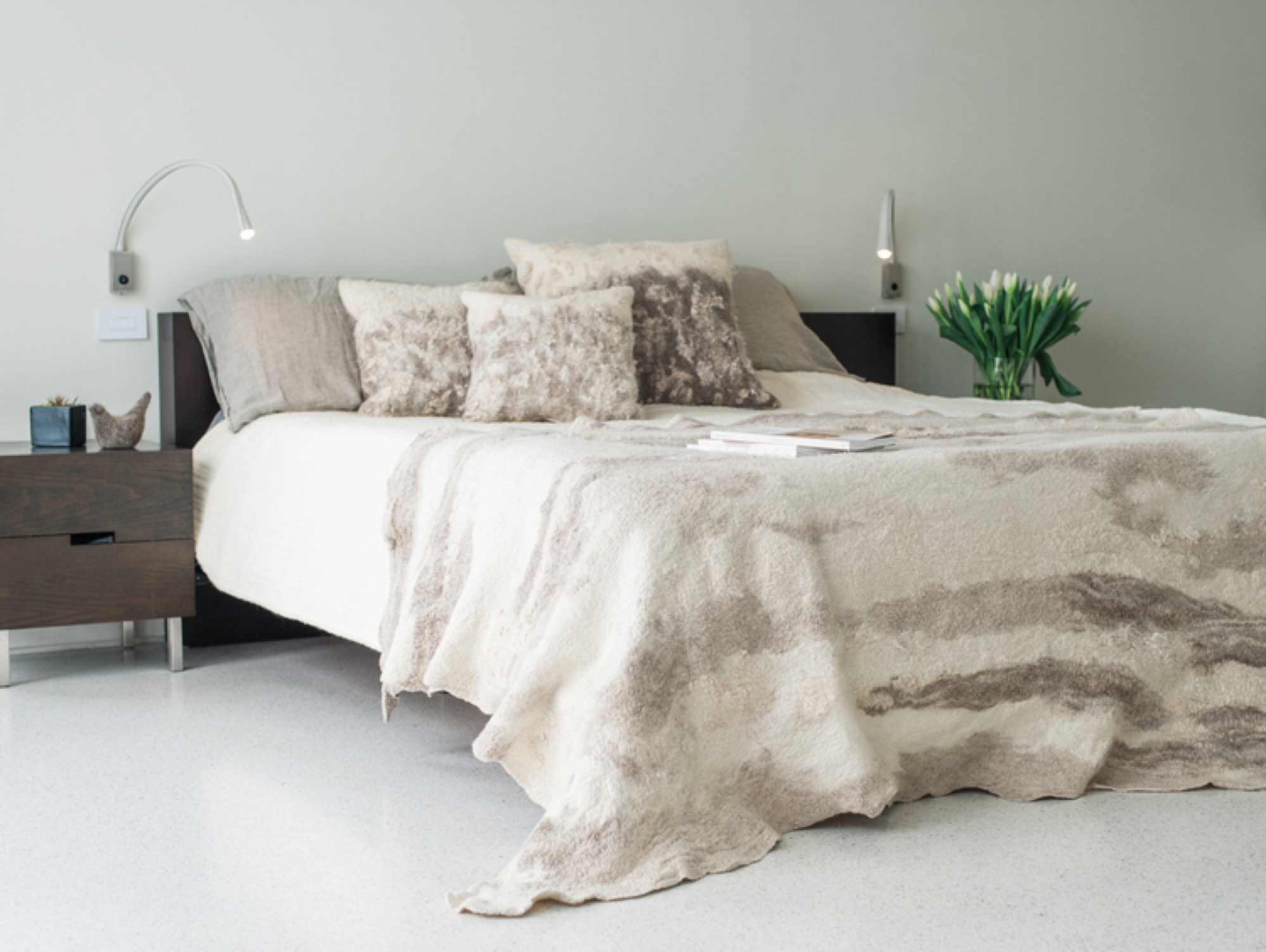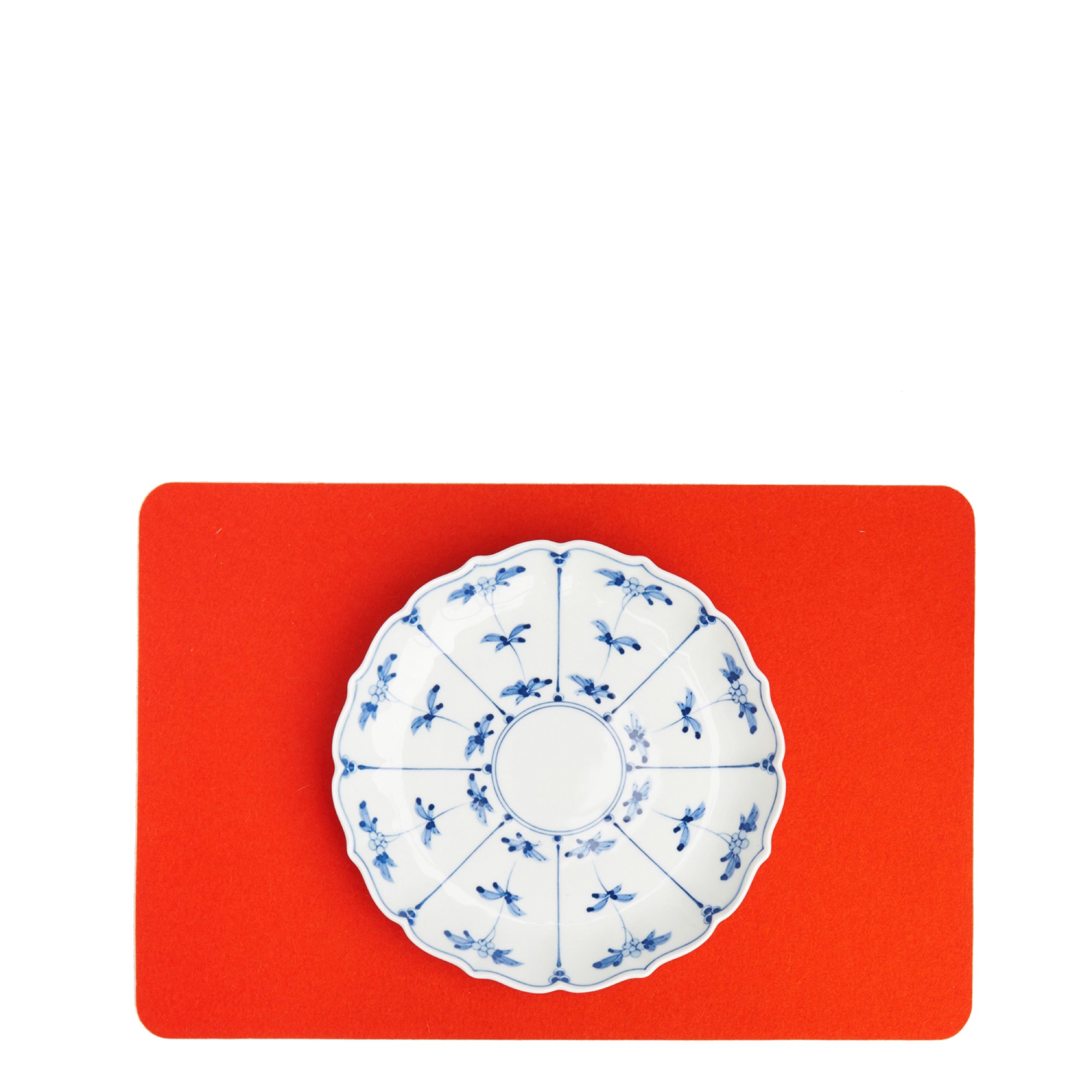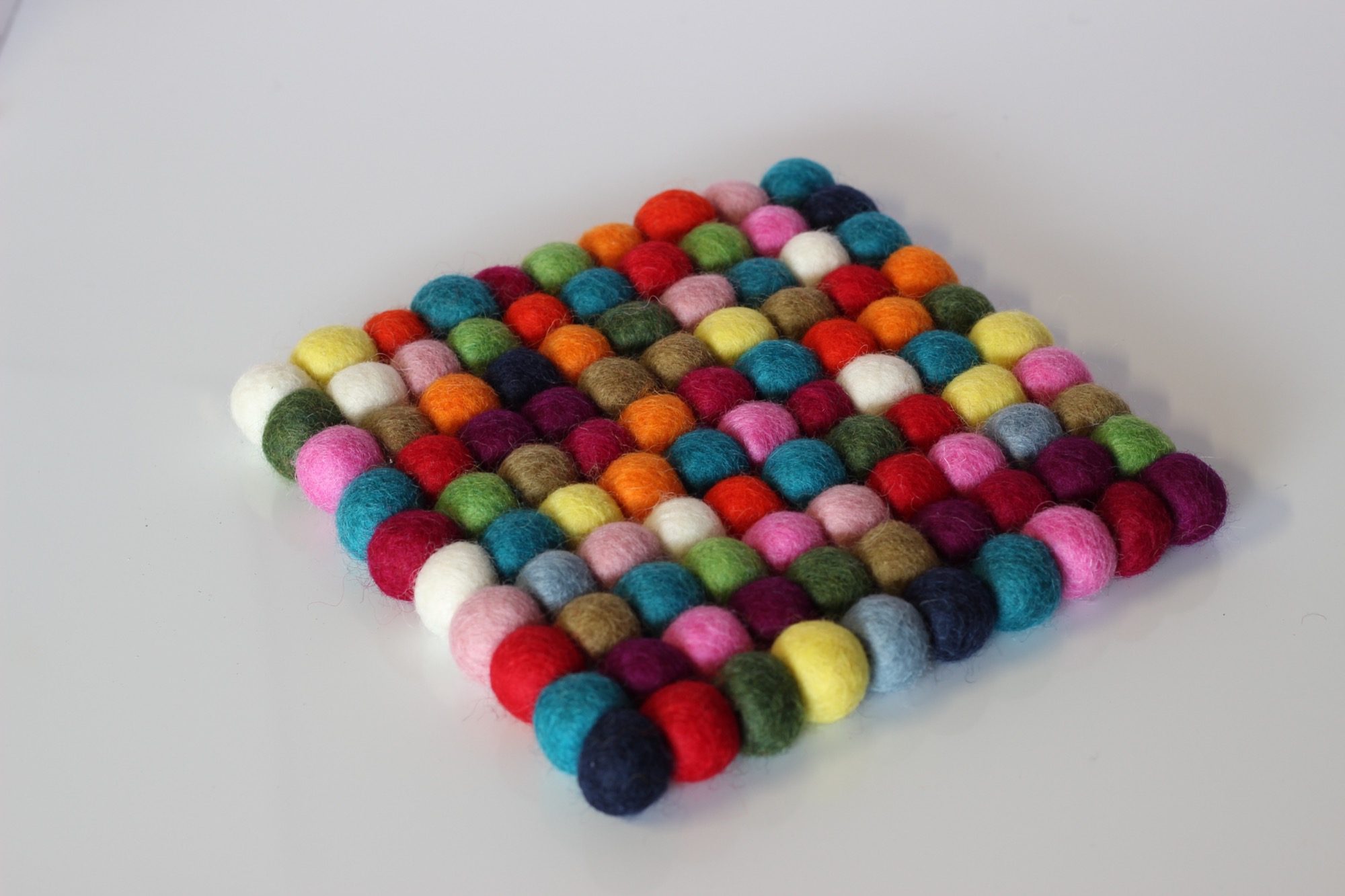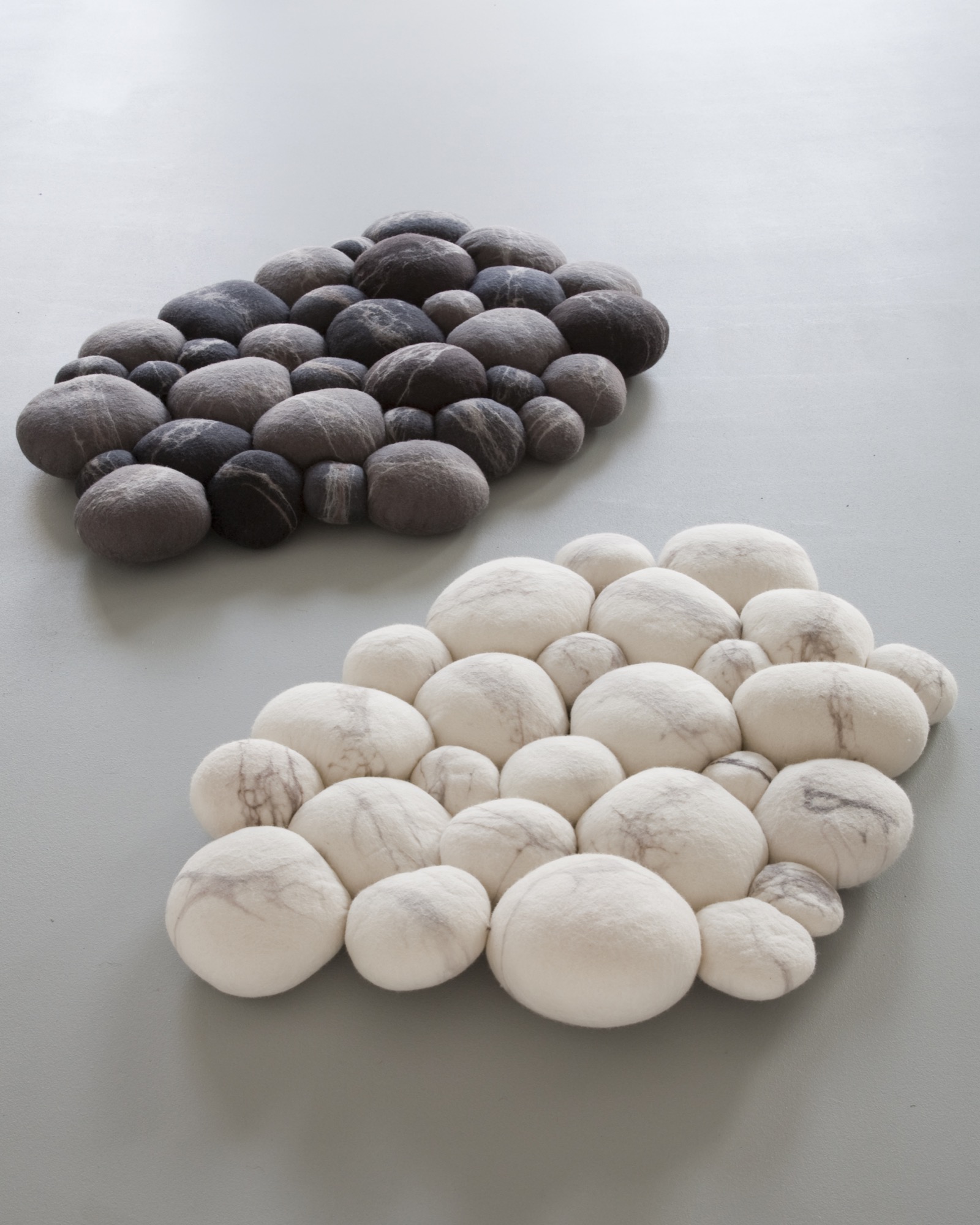
Inspirations
Explore the elevated life in the mountains. This content debuted in 2015 with Alpine Modern’s printed quarterly magazine project.
Home Accessories in Felt
So touchable! Modern pillows, baskets and rugs made from wool and other warm materials.
The archaeologists who liberated the city of Pompeii from the layers of ash preserving it made the fascinating discovery of several felt shops. The ancient Pompeiian felt merchants specialized in wearable pieces like hats, gloves, cloaks and blouses. There are murals depicting the felters at work, kneading the rolls of wool on a low table. The vats present in the work spaces indicate that they also developed a process for dying the felted wool various color ways. While these felters and their shops remain forever frozen in the moment that Mount Vesuvius erupted, felt as a textile has endured. Today, felt is available in a multitude of colors and has enjoyed special status as a favorite craft material. Used for Halloween costumes, elementary school stage sets, holiday decorations, dolly clothes and beginning sewing projects, felt has been a presence in many childhoods. Its woolly texture is tactilely engaging and elicits feelings of comfort and coziness. Felt is now being used as a fabrication for a range of home accessories that add both warmth and appeal to modern spaces.
Felted storage baskets
The following felt baskets offer a winsome means of organizing the modern home and can contain all manner of living room paraphernalia: books, magazines, blankets, extra cushions or firewood.
Muuto’s tidy, molded Restore baskets have rounded, crisp, die-cut edges.
The Korb Tote from Graf Lantz is constructed from felt flexible enough that the leather handles may be folded down for a lower profile or left upright for use as a carrier bag.
Tamar Nix of boodo creates felt storage baskets with an even, geometric cut out pattern that looks woven.
Felt accessories for cuddling up
Felt pillows and throws tucked onto a sofa encourage you to nestle in. The Pebble Cushions from Ronel Jordaan look like a collection of soft, variegated stones.
Bludot’s Duck Duck pillows come in a range of cheerful solids with refreshing, contrasted piping.
The felted cushions and blankets from Fog & Fury range from graphic striped and geometric designs to quieter, blurred compositions with raised woolen curls.
Felt in the kitchen
Felt has also made its way into the kitchen. The understated New Form Felt Bread Baskets from Menu are edged in an exposed zigzag stitch. The morning’s baked goods have never looked more tempting.
The simple Wool Felt Placemats from Graf Lantz add cozy, dimension to your table.
Felt Ball Rug Australia offer colorful, fuzzy trivets prepared to host your tea kettle or warm evening casserole.
Felt for the bath
Beyond felt, the Pompeiians of Ancient Rome were also known for their public thermal baths. How they would have enjoyed stepping out of the bathing pools onto Ronel Jordaan’s inviting felted Pebble Bath Mats.
The Tippy Brass Ballerina
A conversation with designer Eero Koivisto of Claesson Koivisto Rune about the accidental making of the dancing brass bowls
Ballerina is a series of unstable bowls in a highly polished brass plate, designed by the Swedish design studio Claesson Koivisto Rune and produced by the 400-year old metal manufacturer Skultuna, one of the oldest companies in the world.
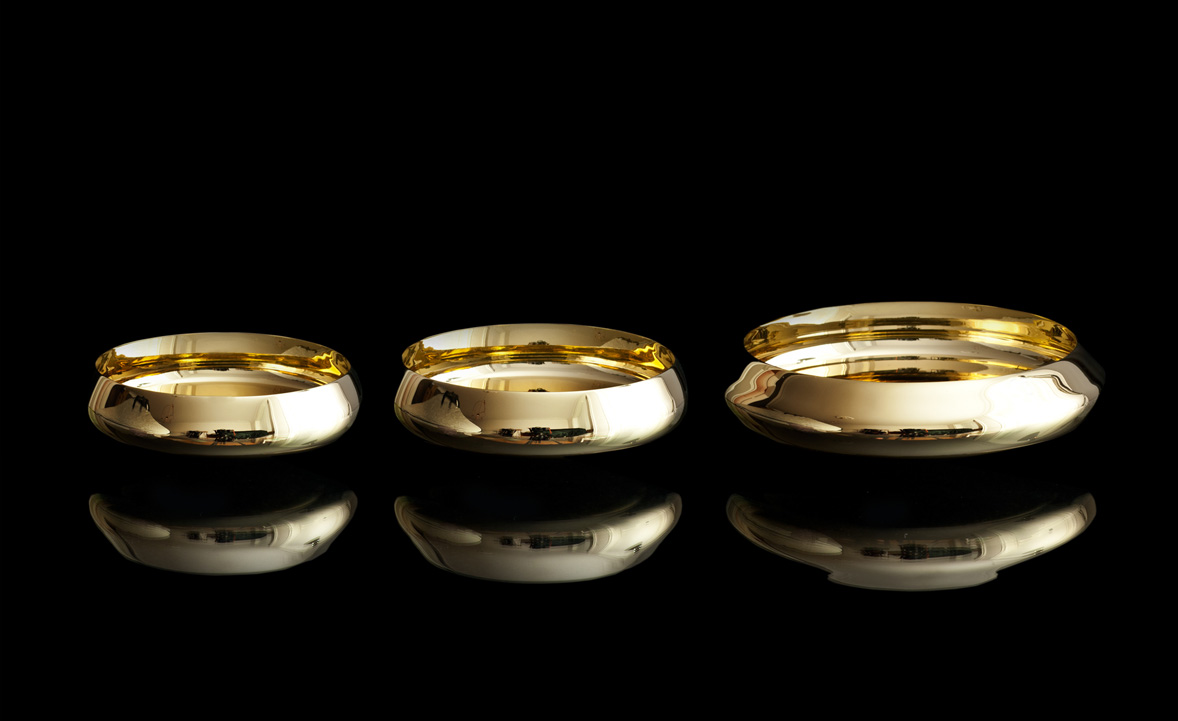
Skultuna, was founded in 1607 by King Karl IX of Sweden as a brass foundry and is still a purveyor to the Royal Court of Sweden, still in the same location. Today, Skultuna works with international designers, including the Swedish architectural partnership Claesson Koivisto Rune, founded 1995 in Stockholm by Mårten Claesson, Eero Koivisto, and Ola Rune. The firm meanwhile puts equal emphasis on architecture and the design of objects from tableware, textiles, and tiles to furniture and lighting.

One of our favorite Claesson Koivisto Rune designs are the tippy brass Ballerina bowls, manufactured by Skultuna. When looking into a bowl, the polished concave inside distorts the reflection so that the actual shape appears flat. Their convex bottoms make the bowls rock and dance when touched. When in movement, the Ballerina bowls also project “dancing” golden, glimmering light reflections around the room. We spoke with the bowls' modernist creator and co-owner of Claesson Koivisto Rune.
A conversation with architect and designer Eero Koivisto

Above, from left: Mårten Claesson, Eero Koivisto, and Ola Rune, the three founders and eponyms of Claesson Koivisto Rune Architects
What is the story behind the Ballerina bowls?
Actually, the bowls started with another product brief for Skultuna, which sort of transformed into the Ballerina bowls. What was the downside of the original design—the movement—turned into a design feature when we decided to make them into small bowls.
One can't help but touch the elegant, shiny bowls and rock them. What is the significance of their intentional movement?
We have worked with movement in usually static design objects before—for example PEBBLES seating for Cappellini, SEESAW for DeVecci, and BASSO, MOEBIUS, and BELLE, also for Skultuna. Since the bowls are fairly small, the movement comes across as playful and slightly surprising.
"Since the bowls are fairly small, the movement comes across as playful and slightly surprising."

When you hold a Ballerina bowl in your hands today—your design that came to live through craftsmanship—what goes through your mind... and heart?
What started out as an idea about movement, has turned into a quite beautiful object in itself.
You designed these bowls for Skultuna. In what way is the experience of designing for a more than 400-year-old company unique?
The owner and the CEO are fairly young, so even if there’s a lot of history involved, they are a pretty youthful company and always open to new ideas in design.
Thus far, what’s your legacy in the design world?
I’m very honoured to be asked the question regarding our work, but I wish to pass it on to others, who can see beyond our own studio, to answer it.
What makes you a modernist?
Living in a modernist society.
What does "quiet design” mean to you?
We are very attracted to the idea that objects co-exist in a given context. Our work is not brash or loud, and it functions well together with other things, which can be totally different in their approach. We don’t really like ”look-at-me” objects.
"Our work is not brash or loud... We don’t really like 'look-at-me' objects."
Usually there’s a lot of idea work in a particular design that is only obvious if you know the story behind it. But when you know the idea behind a certain object we have designed, a new depth occurs—kind of intellectual, but not in an excluding way.
On the other hand, we like the idea that you can use our designs for a lifetime without getting bored by them and without having any idea whatsoever why they look, feel, and function a certain way.
"We like the idea that you can use our designs for a lifetime without getting bored by them and without having any idea whatsoever why they look, feel, and function a certain way."
You design accessories for the home. What does “home” mean to you?
Most of our work is buildings, since we are an architectural studio, but we enjoy doing smaller objects and furniture, too. If architecture is our life’s journey, the smaller objects are the nice dinners with friends along the way. So, home is where we live our lives. Wherever that may be.
"If architecture is our life’s journey, the smaller objects are the nice dinners with friends along the way."
What’s most important to you in life?
My family and my work. In that order.
When are you happiest?
At home and at work. In the same order.
Who is your design icon?
I don’t really have icons anymore, but I do admire good work from people I know.
What inspires you as a designer?
Art and music.
What are you working on these days?
About ten different architectural projects—private houses, places for art, apartment buildings, hotels, and about 40 design projects in various stages of their design. All over the globe. △

